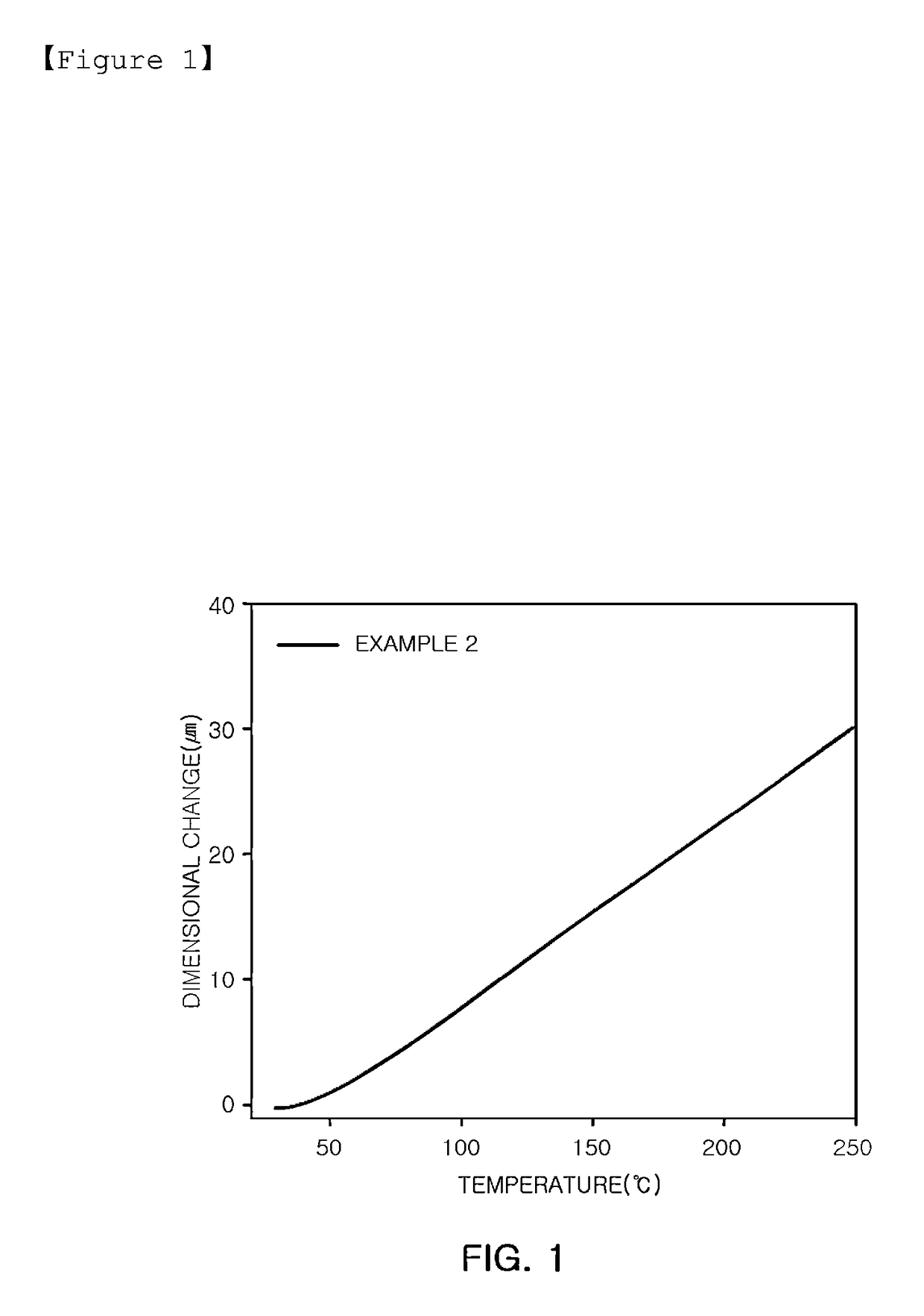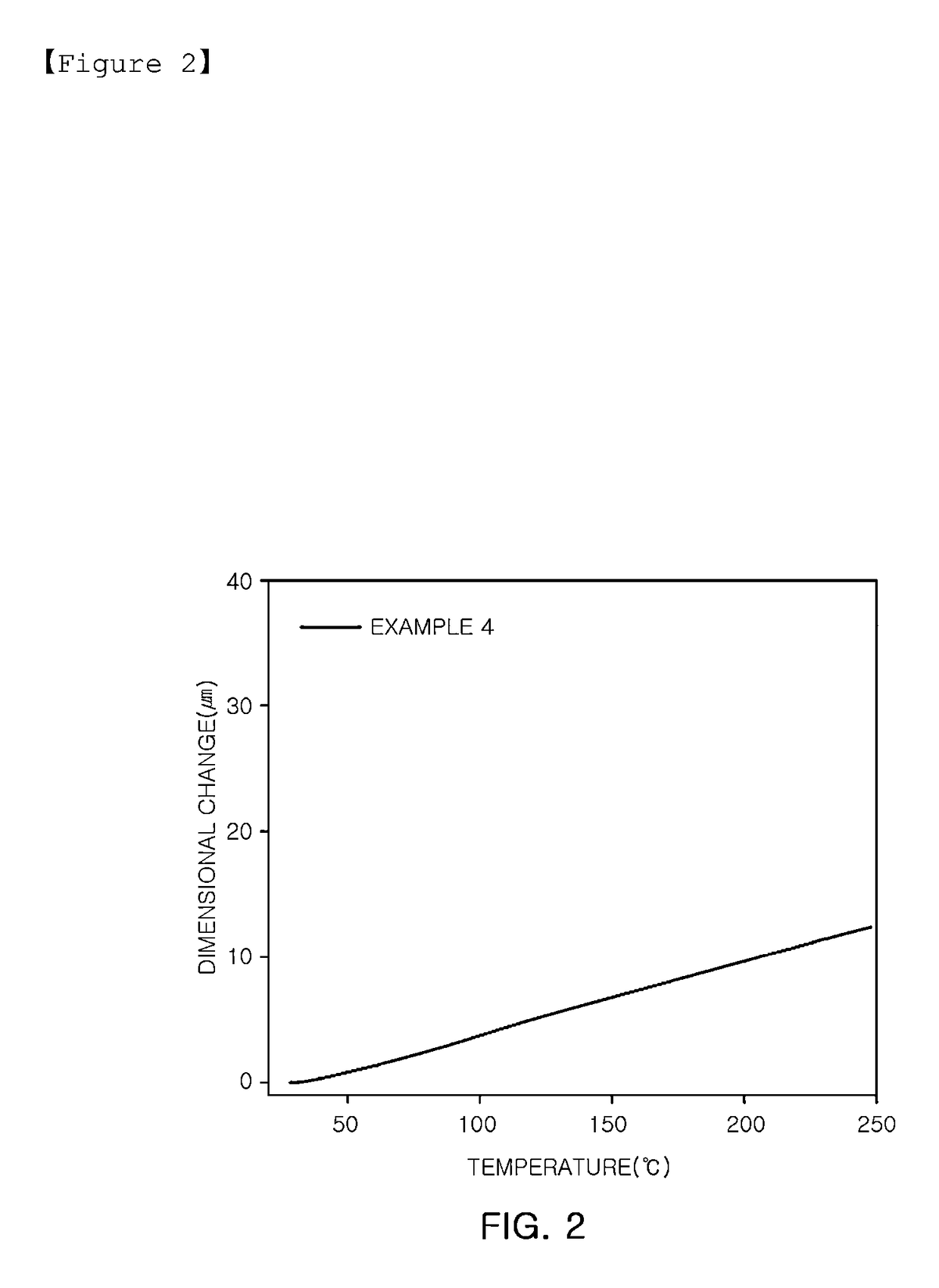Epoxy compound having alkoxysilyl group, method for preparing the same, composition including the same, cured product made from the composition, and use of the composition
a technology of alkoxysilyl group and epoxy compound, which is applied in the field of epoxy compound, can solve the problems of product defects, warpage of substrates, and significant deformation of the properties and processability of polymer materials, and achieve the effects of improving heat resistance properties, reducing cte of epoxy composites, and increasing glass transition temperatures
- Summary
- Abstract
- Description
- Claims
- Application Information
AI Technical Summary
Benefits of technology
Problems solved by technology
Method used
Image
Examples
Embodiment Construction
. Synthesis of Binaphthalene Epoxy Having Alkoxysilyl Group (Structure A-1) (Method 1)
[0371](1) First Step
[0372]To a two-necked flask, 10 g of bis(2,7-bis(oxiran-2-ylmethoxy)naphthalene-1-yl)methane (DIC Co, EXA-4700, Formula A-epoxy) was added, and 22.5 ml of THF and acetonitrile were respectively added to dissolve an epoxy specimen. Then, 0.93 g of NaOH, 1.13 g of Et4NBr and 26.09 g of allyl alcohol were added thereto, followed by stirring at room temperature for 6 hours. 10 ml of a saturated NH4Cl solution was added thereto to terminate the reaction. Thereafter, solvents were partially removed using a rotary evaporator, and the residue was worked-up using 150 ml of ethyl acetate and 50 ml of tap water three times. An organic layer was separated, residual H2O was removed with MgSO4, and the organic layer was completely dried using a rotary evaporator and a vacuum pump to produce Intermediate A-0 having the ratio of epoxy group:allyl group of 1:1. NMR data are as follows.
[0373]1H N...
PUM
| Property | Measurement | Unit |
|---|---|---|
| glass transition temperature | aaaaa | aaaaa |
| diameter | aaaaa | aaaaa |
| particle size | aaaaa | aaaaa |
Abstract
Description
Claims
Application Information
 Login to View More
Login to View More - R&D
- Intellectual Property
- Life Sciences
- Materials
- Tech Scout
- Unparalleled Data Quality
- Higher Quality Content
- 60% Fewer Hallucinations
Browse by: Latest US Patents, China's latest patents, Technical Efficacy Thesaurus, Application Domain, Technology Topic, Popular Technical Reports.
© 2025 PatSnap. All rights reserved.Legal|Privacy policy|Modern Slavery Act Transparency Statement|Sitemap|About US| Contact US: help@patsnap.com



